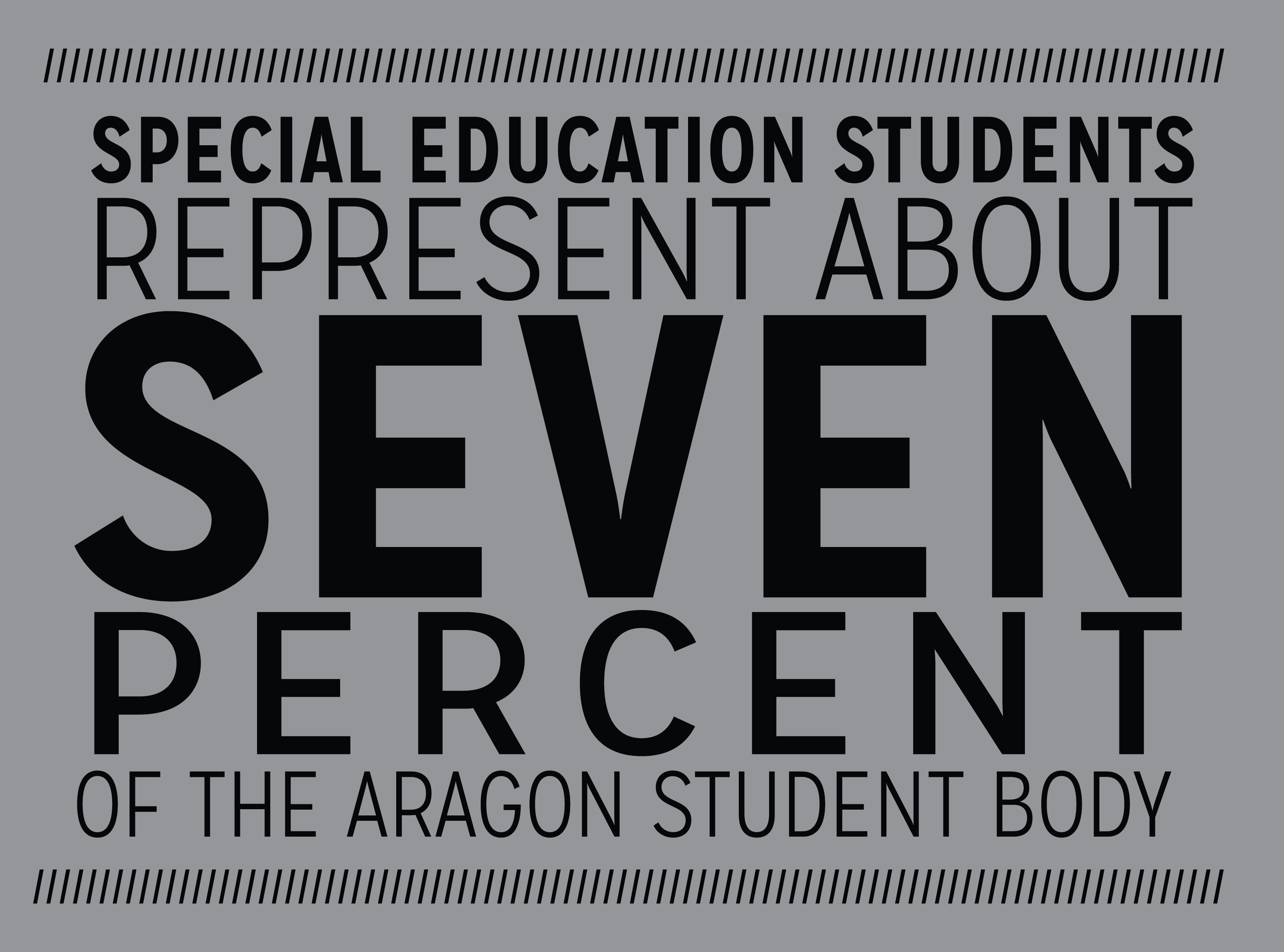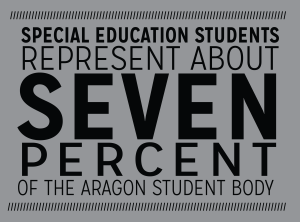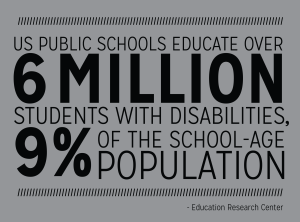

Currently, over 100 students utilize the array of special education services provided at Aragon.
“It’s all based on a spectrum of individualized needs, so whatever a student might need, they would receive,” says special education teacher Kirt Peterson.
Individualized, the classes encompass a spectrum of services, varying from academic guidance to social integration. On social classes, special education teacher Julie Suess says, “[They are for students who] struggle with the social skills of eye contact, or shaking hands, or empathy with someone else.”
Courses like the Social World class guide students through interactions. “They do a lot of role-playing games; they do a lot of different things where they’re given situations and what would be a good response to that situation,” continues Suess.
Math teacher Allen Amusin, who was a special education student at Aragon ten years ago, took special education classes for his dyslexia. “For classes that involved a lot of reading, I would need more time to read all the questions. That was a class that would help accommodate that kind of need. It was also a chance for me to work on homework for my other classes and learn other techniques to read faster and more efficiently.”
While special education classes cater to different needs, they remain similar to general education classes with regards to curriculum. “They mirror the general Ed classes, but there’s a lot of built-in accommodations and modifications to the curriculum. I plan, for instance, with Mr. Henderson for Contemporary World Studies,” says special education and history teacher Michael Gibbons.
Special education classes, however, address aspects beyond the basic curriculum. Amusin says, “It did teach you techniques to overcome your disability. Dyslexia’s something you live with all your life, but you get better at it.”

Recalling the special techniques taught, Amusin says, “Slowing down is a big one they stressed at that time. Double-checking your answers is another technique they taught. With reading, just follow along with your finger or a book mark. For me, when I read too fast, my eyes tend to jump lines. If you’re using a bookmark, your eyes are more focused on the location you’re reading, and you’ll notice that you jumped right away, because you have something keeping track of where you are.”
The smaller sizes of Special education classes allow for students to acquire help more easily.
One anonymous student taking both general and special education classes says, “Special education classes are more student-focused, more centralized on the student.”
“When we’re learning the techniques, in terms of mastering a new technique, the teacher can walk you through it more. Whereas if you have a class of thirty, they might do it on the overhead, but they can’t exactly monitor every detail every student’s doing at the exact same time. When they have the one on one time, there’s more opportunity to see more of the students more and guide the student further through that process,” says Amusin.
As far as the atmosphere of these classes, there is no distinct pattern. “I have a Junior class that’s really loud, that’s how they like to be. So it’s kind of like a picnic, like a barbecue in the backyard. Everyone’s chatting or talking. Some people are quiet over there, others are loud over here. Some classes are quiet the whole time. So it’s a varying degree,” says Peterson.
An anonymous special education student adds, “Socially, it’s easier to make friends. I’m not intimidated by the large number of students because special education classes are smaller.”




